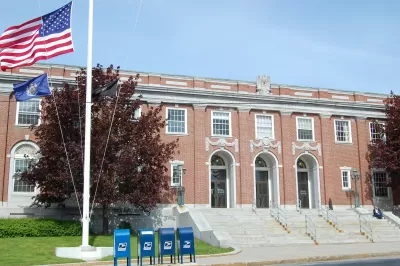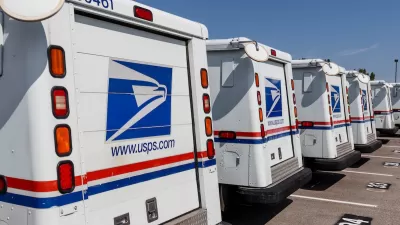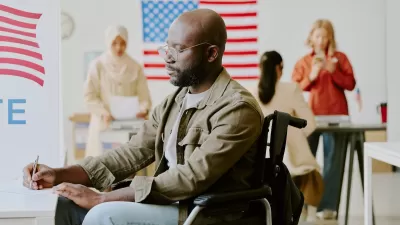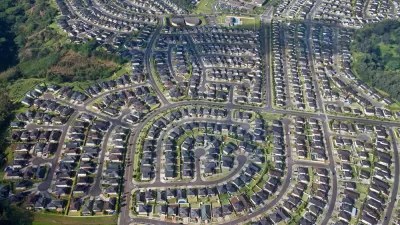An urban designer argues that protecting the U.S. Postal Service is crucial for maintaining civic values, social ties, and urban life.

“The post office is what urban designers call a 'local public anchor institution.' These are the shared civic buildings, services, and spaces accessible by all and benefiting all, and they also include public schools, libraries, and parks. They support the population without discrimination, through economic downturns and even during pandemics,” writes Patty Heyda.
Post offices do far more than just provide mail service and ensure voting rights, as important as those aspects of the postal service might be. “The post office shapes American public and private life in cities and towns, large and small. A dismantled USPS erodes American social ties, neighborhoods, and even families,” says Heyda.
The architecture of postal buildings reflects the government’s view of people and society, argues Heyda. When post offices go from stately buildings to branch offices in strip malls, the message is clear that public life is not a priority.
In addition, post offices maintain important social connections, says Heyda. From postal carriers who know the residents on their routes to post offices that double as social and informational hubs, the postal service is an institution that plays an essential role in American life.
FULL STORY: What dismantling the Postal Service will do to American cities

Planetizen Federal Action Tracker
A weekly monitor of how Trump’s orders and actions are impacting planners and planning in America.

Congressman Proposes Bill to Rename DC Metro “Trump Train”
The Make Autorail Great Again Act would withhold federal funding to the system until the Washington Metropolitan Area Transit Authority (WMATA), rebrands as the Washington Metropolitan Authority for Greater Access (WMAGA).

DARTSpace Platform Streamlines Dallas TOD Application Process
The Dallas transit agency hopes a shorter permitting timeline will boost transit-oriented development around rail stations.

Renters Now Outnumber Homeowners in Over 200 US Suburbs
High housing costs in city centers and the new-found flexibility offered by remote work are pushing more renters to suburban areas.

The Tiny, Adorable $7,000 Car Turning Japan Onto EVs
The single seat Mibot charges from a regular plug as quickly as an iPad, and is about half the price of an average EV.

Supreme Court Ruling in Pipeline Case Guts Federal Environmental Law
The decision limits the scope of a federal law that mandates extensive environmental impact reviews of energy, infrastructure, and transportation projects.
Urban Design for Planners 1: Software Tools
This six-course series explores essential urban design concepts using open source software and equips planners with the tools they need to participate fully in the urban design process.
Planning for Universal Design
Learn the tools for implementing Universal Design in planning regulations.
Municipality of Princeton
Roanoke Valley-Alleghany Regional Commission
City of Mt Shasta
City of Camden Redevelopment Agency
City of Astoria
Transportation Research & Education Center (TREC) at Portland State University
US High Speed Rail Association
City of Camden Redevelopment Agency
Municipality of Princeton (NJ)





























